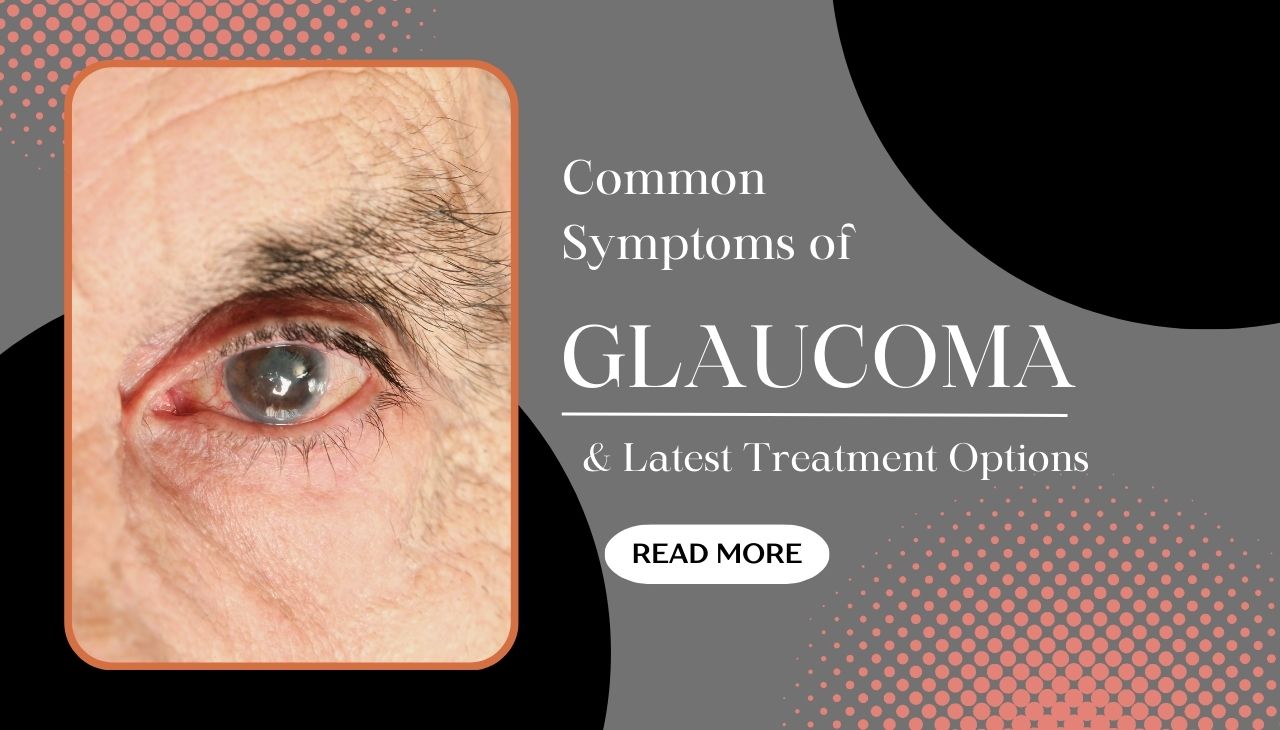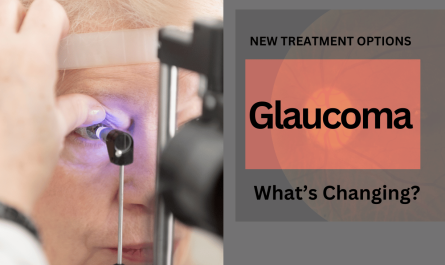Common Symptoms of Glaucoma and the Latest Treatment Options
Glaucoma is one of the leading causes of irreversible blindness worldwide. Often referred to as the “silent thief of sight,” this condition develops gradually and can go unnoticed until significant vision loss has occurred. Early detection of the symptoms of glaucoma and its treatment are vital to preserving vision.
What is Glaucoma?
Glaucoma is a group of eye conditions that damage the optic nerve, typically due to high intraocular pressure (IOP). The optic nerve connects the eye to the brain and is crucial for transmitting visual information. Without proper treatment, glaucoma can lead to permanent blindness.

Common Symptoms of Glaucoma
In its early stages, glaucoma may not exhibit any symptoms. However, as the condition progresses, the following signs may appear:
1. Gradual Loss of Peripheral Vision
- One of the hallmark symptoms, especially in open-angle glaucoma, is a slow decline in peripheral or side vision. This can lead to “tunnel vision” if left untreated.
2. Eye Pain and Redness
- Sudden and severe eye pain accompanied by redness is a common sign of acute angle-closure glaucoma, which requires immediate medical attention.
3. Blurred Vision
- Blurred or hazy vision may occur, especially during episodes of elevated intraocular pressure.
4. Halos Around Lights
- Seeing halos or rainbow-colored rings around lights is another symptom often associated with increased IOP.
5. Nausea and Vomiting
- Acute glaucoma can cause systemic symptoms like nausea and vomiting due to sudden spikes in eye pressure.
6. Frequent Changes in Prescription Glasses
- Repeated changes in your eyeglass prescription can be an early indicator of glaucoma progression.
If you experience any of these symptoms, consult an eye specialist promptly to assess your risk and determine the appropriate treatment.
Types of Glaucoma
Understanding the type of glaucoma you have is essential for effective treatment:
- Open-Angle Glaucoma: The most common type, it develops gradually without obvious symptoms in the early stages.
- Angle-Closure Glaucoma: Less common but more severe, it occurs suddenly and requires immediate intervention.
- Normal-Tension Glaucoma: Damage occurs to the optic nerve despite normal intraocular pressure.
- Congenital Glaucoma: A rare form that affects infants due to developmental abnormalities in the eye’s drainage system.
- Secondary Glaucoma: Caused by another medical condition, such as diabetes or inflammation.
Latest Treatment Options for Glaucoma
Advancements in medical science have introduced various effective treatments to manage glaucoma and prevent further vision loss. Here are the latest options:
1. Medications
- Eye Drops: Prostaglandins, beta-blockers, and alpha agonists are commonly prescribed to lower IOP.
- Oral Medications: Carbonic anhydrase inhibitors may be recommended for severe cases.
2. Laser Treatments
- Selective Laser Trabeculoplasty (SLT): A minimally invasive procedure that improves fluid drainage and reduces IOP.
- Laser Peripheral Iridotomy: Used to treat angle-closure glaucoma by creating a small hole in the iris to improve fluid flow.
3. Minimally Invasive Glaucoma Surgery (MIGS)
- MIGS procedures, such as the iStent or Hydrus Microstent, are less invasive alternatives to traditional surgery and have shorter recovery times.
4. Traditional Surgery
- Trabeculectomy: A surgical procedure that creates a new drainage pathway to lower IOP.
- Glaucoma Drainage Devices: Implants like the Ahmed or Baerveldt shunt help control fluid buildup.
5. Advanced Monitoring Technologies
- Devices like the Triggerfish contact lens continuously monitor IOP fluctuations, helping doctors tailor treatments more effectively.
Preventing Vision Loss from Glaucoma
While glaucoma cannot be cured, early diagnosis and timely treatment can slow its progression. Here are some tips to protect your vision:
- Regular Eye Exams: Routine check-ups, especially for individuals over 40 or with a family history of glaucoma.
- Healthy Lifestyle: Maintain a balanced diet, exercise regularly, and avoid smoking to improve overall eye health.
- Monitor Chronic Conditions: Manage diabetes and hypertension, as these can contribute to glaucoma risk.
Why Choose Laxmi Eye Hospital for Glaucoma Treatment?
For comprehensive care and state-of-the-art treatment for glaucoma, Laxmi Eye Hospital stands out as a trusted name. With branches in Kamothe, Dombivli, Kharghar, and Panvel, Laxmi Eye Hospital offers personalized treatment plans and advanced diagnostic tools to safeguard your vision.
Key Benefits of Choosing Laxmi Eye Hospital:
- Expert Ophthalmologists: Highly experienced eye specialists who excel in diagnosing and treating various types of glaucoma.
- Cutting-Edge Technology: Advanced diagnostic equipment and innovative treatment methods ensure precision and safety.
- Patient-Centered Care: Dedicated support throughout the treatment journey, from consultation to follow-ups.
- Convenient Locations: Easily accessible branches in Mumbai and Navi Mumbai to cater to your needs.
Conclusion
Understanding the symptoms of glaucoma and its treatment options is the first step toward preserving your vision. Whether you’re experiencing early signs or seeking advanced management, the experts at laxmi Eye Hospital are here to help. Don’t wait for symptoms to worsen—schedule a consultation at one of their branches in Kamothe, Dombivli, Kharghar, or Panvel and take control of your eye health today.




